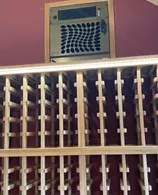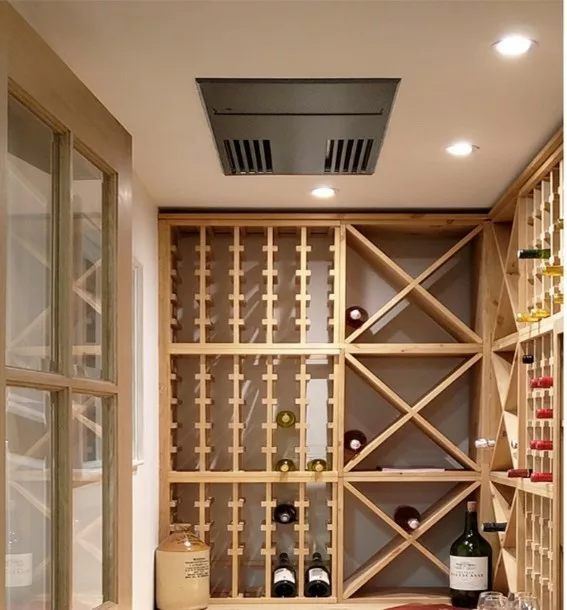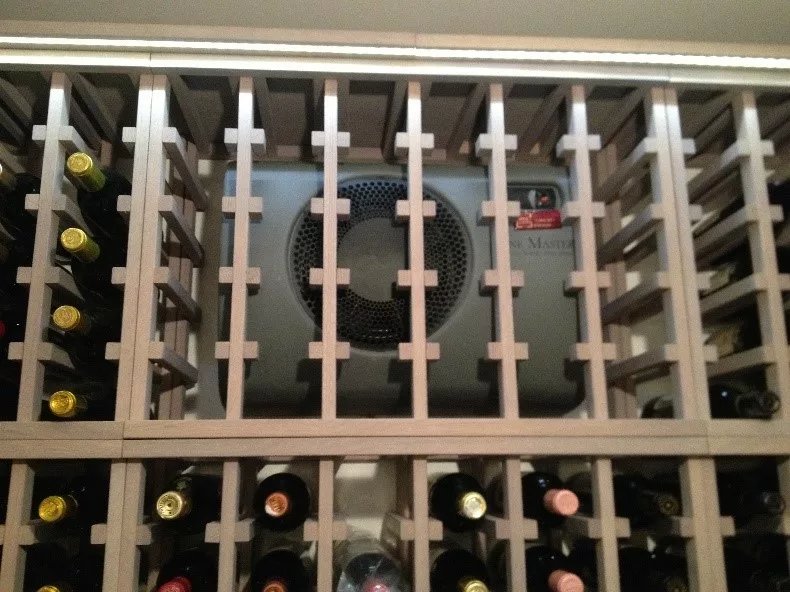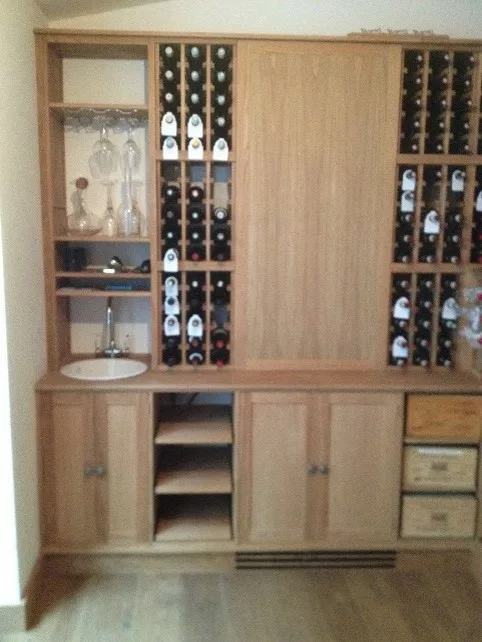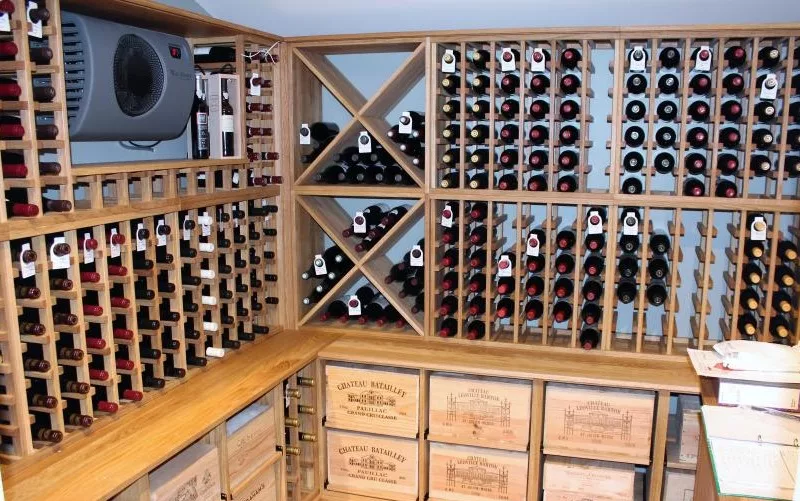
Cellar Temperature using cellar conditioners
This article provides the information you need to make sure your wine cellar, or wine room is kept at the perfect temperature. In particular, we look at the importance of cellar conditioners.
Cellar Conditioner Experts
If a cellar conditioner is needed, and for perfect wine storage it usually is, you need to understand what a cellar conditioner does and how it works.
At Wine Racks UK we have nearly 50 years of perfecting the storage of prestige wines for our very discerning clients.
If you are wanting the best place to store your collections call A&W Moore Wine Racks UK.
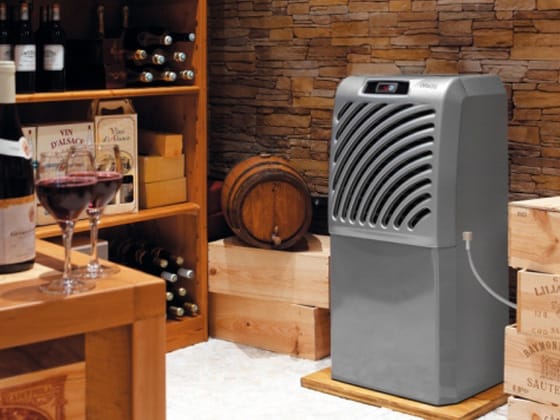
What is a wine cellar conditioner?
A wine cellar conditioner is a specifically designed system for achieving and maintaining the the perfect atmosphere for your wine cellar and the wines in it. They operate like an air cooling systems, with built in monitors, refrigerating system and an evaporator.
Why should I buy a cellar conditioner rather than a regular/ standard air conditioner?
There is a significant difference between a cellar conditioner and a regular air conditioning for a cellar. We strongly advise to use the former and will explain what a cellar conditioner does and how it works.
What is the main difference between a standard or regular air conditioner and a proper wine cooling system/cellar conditioner?
Lower demand for temperature. Slower rate of cooling. All year running and humidification function.
How a cellar conditioner works
The cellar conditioners that sit in the wall have a fan that runs and circulates the air inside the cellar. The air entering the unit is cooled if it is above the desired temperature and the same air is returned to the cellar. There is a heat exchanger and the units operate within a 2C range so that the cooling side of the unit is not constantly being turned on and off. If the unit is set at 12
C it will run between 11-13˚C. The warmth created by the unit is then expelled out of the back of the unit. Some people think that the warm air coming out of the back of the unit is the same warm air that went into the front of the unit from the cellar which is incorrect. The air in the cellar is recirculated. As the air in the cellar is cooled it will produce a small amount of moisture.
Damp with Normal Air Conditioning
What tends to happen is that when the units are first turned on they will produce a small amount of water and then settle down to produce very little water if any, providing that the cellar has no damp problems and that the door has a proper seal and is not being continually opened. The units are not designed to be a dehumidifier for a damp cellar. The water that is produced is recirculated back into the cellar to keep the humidity at a reasonable level. Excess water is drained off.
The split systems work in a very similar way except the warmth created by the unit in the cellar is transferred to a liquid which is pumped to the outside of the building and the heat is expelled into the atmosphere.
The importance of using a cellar conditioner
We have often been asked, particularly on new build projects, whether the company doing the air conditioning for the house can put a standard conditioning unit in and programme it to operate at 14˚ C . For example, Panasonic make a wall mounted PACi that can be programmed to operate at low temperatures.
There has been problems with the standard units as the ones that we have used in our cellars have a special coating on the internal parts so that it helps to prevent corrosion.
Cellars often have relatively high humidity levels compared with normal living accommodation. When moisture comes out of brick work or concrete it can form efflorescence salts. When this is combined with water it produces acid which can destroy the standard air conditioning.
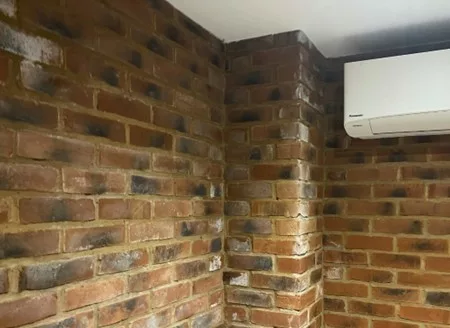
The above picture shows efflorescence salts on the brick work. This was a new build cellar and the owner employed a company that did not have experience in fitting cellar conditioners.
The Advantage of Cellar Conditioners
Unlike a cellar conditioner, a standard unit has no corrosion protection so it failed after a few months of operation. After having a new cellar built it is a good idea to use a dehumidifier for a few weeks so the bricks and concrete can be thoroughly dried out. Often concrete will look and feel dry but it is still emitting moisture which can cause wood to warp. It is easy to tell when the cellar is properly dry as the dehumidifier will no longer be extracting water from the air.
Good humidity as well as temperature
Standard air conditioners also tend to dry the air in the cellar as when the air is cooled moisture is removed and they have a drain to take this out of the cellar. The result is that the air can become very dry and can damage the corks by drying them out. It is not uncommon for the moisture content to be reduced to 50% humidity which is far to low for a wine cellar. Proper cellar conditioners such as the Fondis units retain the water so that it can be sent back into the cellar to maintain a reasonable humidity. If there is excess water in damp cellars the units do have a drain to remove the excess.
Need help with your wine cellar? Contact the experts on 0115 944 1434!
